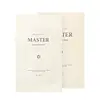What's inside
What's inside
 Key Ingredients
Key Ingredients

 Benefits
Benefits

 Ingredients Side-by-side
Ingredients Side-by-side

Water
Skin ConditioningButylene Glycol
HumectantGlycerin
Humectant1,2-Hexanediol
Skin ConditioningCaprylic/Capric Triglyceride
MaskingHydrogenated Lecithin
EmulsifyingPhytosteryl/Octyldodecyl Lauroyl Glutamate
Skin ConditioningCeramide NP
Skin ConditioningSodium Hyaluronate
HumectantEthylhexylglycerin
Skin ConditioningGlutathione
Citrus Aurantium Bergamia Fruit Oil
MaskingTrehalose
HumectantAllantoin
Skin ConditioningDipotassium Glycyrrhizate
HumectantXanthan Gum
EmulsifyingCarbomer
Emulsion StabilisingArginine
MaskingPEG-60 Hydrogenated Castor Oil
EmulsifyingDisodium EDTA
Water, Butylene Glycol, Glycerin, 1,2-Hexanediol, Caprylic/Capric Triglyceride, Hydrogenated Lecithin, Phytosteryl/Octyldodecyl Lauroyl Glutamate, Ceramide NP, Sodium Hyaluronate, Ethylhexylglycerin, Glutathione, Citrus Aurantium Bergamia Fruit Oil, Trehalose, Allantoin, Dipotassium Glycyrrhizate, Xanthan Gum, Carbomer, Arginine, PEG-60 Hydrogenated Castor Oil, Disodium EDTA
Centella Asiatica Extract
CleansingWater
Skin ConditioningDipropylene Glycol
HumectantGlycerin
HumectantGlycereth-26
HumectantMethyl Gluceth-20
HumectantBifida Ferment Lysate
Skin ConditioningPanthenol
Skin ConditioningSodium Hyaluronate
HumectantCeramide NP
Skin ConditioningMadecassoside
AntioxidantCitrus Nobilis Peel Extract
MaskingCarbomer
Emulsion StabilisingCellulose Gum
Emulsion StabilisingArginine
MaskingPolyglyceryl-10 Laurate
Skin ConditioningDisodium EDTA
Ethylhexylglycerin
Skin ConditioningAllantoin
Skin ConditioningEctoin
Skin ConditioningHydrolyzed Hyaluronic Acid
HumectantCyclodextrin
AbsorbentHydrogenated Lecithin
EmulsifyingCentella Asiatica Extract, Water, Dipropylene Glycol, Glycerin, Glycereth-26, Methyl Gluceth-20, Bifida Ferment Lysate, Panthenol, Sodium Hyaluronate, Ceramide NP, Madecassoside, Citrus Nobilis Peel Extract, Carbomer, Cellulose Gum, Arginine, Polyglyceryl-10 Laurate, Disodium EDTA, Ethylhexylglycerin, Allantoin, Ectoin, Hydrolyzed Hyaluronic Acid, Cyclodextrin, Hydrogenated Lecithin
Ingredients Explained
These ingredients are found in both products.
Ingredients higher up in an ingredient list are typically present in a larger amount.
Allantoin is a soothing ingredient known for its protective and moisturizingg properties. Because of this, it is often added to products with strong active ingredients.
Studies show higher concentrations of this ingredient can promote wound healing.
Though it can be derived from the comfrey plant, allantoin is produced synthetically for cosmetic products to ensure purity.
Learn more about AllantoinArginine is an amino acid that is important for human development. Your body uses is it to produce hair keratin and skin collagen.
As a cosmetic ingredient, Arginine has antioxidant properties and can also help repair damaged skin. This ingredient is derived either synthetically or from animals.
Arginine isn't fungal acne safe when used in the presence of other lipids (fats, fatty acids, oils, esters, etc). Oils and fats occur naturally within the skin, so take caution when using Arginine if you're prone to fungal acne.
Learn more about ArginineCarbomer is a polymer of acrylic acid. Its main role is to create a gel consistency.
A high amount of carbomer can cause pilling or balling up of products. Don't worry, most products contain 1% or less of carbomer.
Ceramide NP is a type of ceramide and formally known as ceramide 3.
Ceramides are intercellular lipids naturally found in our skin that bonds dead skin cells together to create a barrier. They are known for their ability to hold water and thus are a great ingredient for dry skin.
Ceramides are an important building block for our skin barrier. A stronger barrier helps the skin look more firm and hydrated. By bolstering the skin ceramides act as a barrier against irritating ingredients. This can help with inflammation as well.
If you would like to eat ceramides, sweet potatoes contain a small amount.
Read more about other common types of ceramides here:
Ceramide AP
Ceramide EOP
Disodium EDTA plays a role in making products more stable by aiding other preservatives.
It is a chelating agent, meaning it neutralizes metal ions that may be found in a product.
Disodium EDTA is a salt of edetic acid and is found to be safe in cosmetic ingredients.
Learn more about Disodium EDTAEthylhexylglycerin (we can't pronounce this either) is commonly used as a preservative and skin softener. It is derived from glyceryl.
You might see Ethylhexylglycerin often paired with other preservatives such as phenoxyethanol. Ethylhexylglycerin has been found to increase the effectiveness of these other preservatives.
Glycerin is already naturally found in your skin. It helps moisturize and protect your skin.
A study from 2016 found glycerin to be more effective as a humectant than AHAs and hyaluronic acid.
As a humectant, it helps the skin stay hydrated by pulling moisture to your skin. The low molecular weight of glycerin allows it to pull moisture into the deeper layers of your skin.
Hydrated skin improves your skin barrier; Your skin barrier helps protect against irritants and bacteria.
Glycerin has also been found to have antimicrobial and antiviral properties. Due to these properties, glycerin is often used in wound and burn treatments.
In cosmetics, glycerin is usually derived from plants such as soybean or palm. However, it can also be sourced from animals, such as tallow or animal fat.
This ingredient is organic, colorless, odorless, and non-toxic.
Glycerin is the name for this ingredient in American English. British English uses Glycerol/Glycerine.
Learn more about GlycerinHydrogenated Lecithin is created from the hydrogenation of lecithin (a group of phospholipids). Hydrogenation is a chemical reaction between hydrogen and another element.
This ingredient is an emollient and emulsifier. As an emollient, it helps soften skin by trapping moisture within. As an emulsifier, it prevents oil and water ingredients from separating.
Sodium Hyaluronate is hyaluronic acid's salt form. It is commonly derived from the sodium salt of hyaluronic acid.
Like hyaluronic acid, it is great at holding water and acts as a humectant. This makes it a great skin hydrating ingredient.
Sodium Hyaluronate is naturally occurring in our bodies and is mostly found in eye fluid and joints.
These are some other common types of Hyaluronic Acid:
Learn more about Sodium HyaluronateWater. It's the most common cosmetic ingredient of all. You'll usually see it at the top of ingredient lists, meaning that it makes up the largest part of the product.
So why is it so popular? Water most often acts as a solvent - this means that it helps dissolve other ingredients into the formulation.
You'll also recognize water as that liquid we all need to stay alive. If you see this, drink a glass of water. Stay hydrated!
Learn more about Water